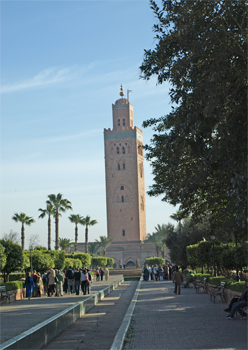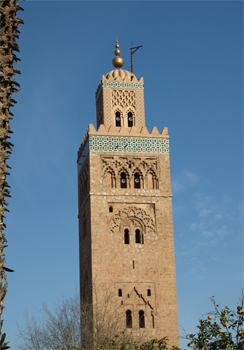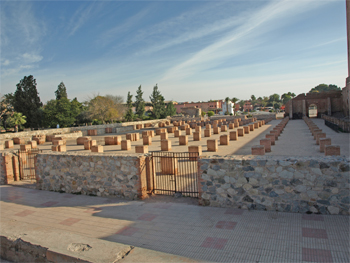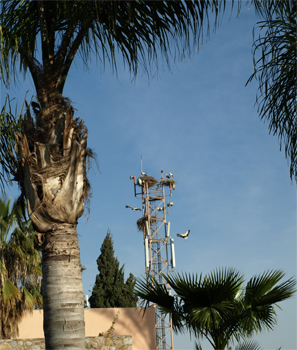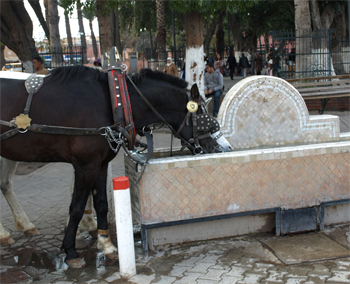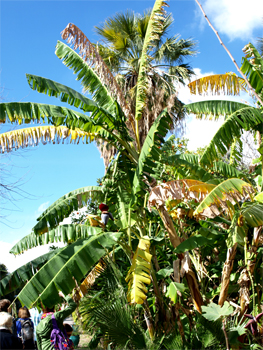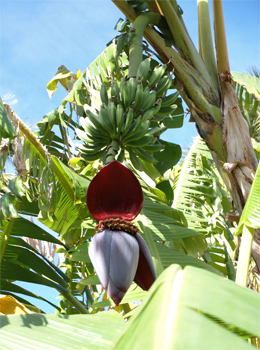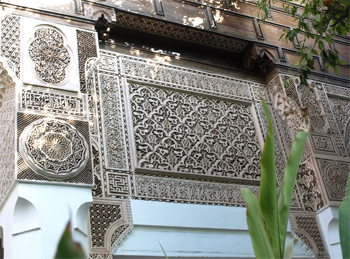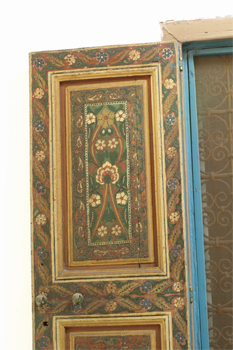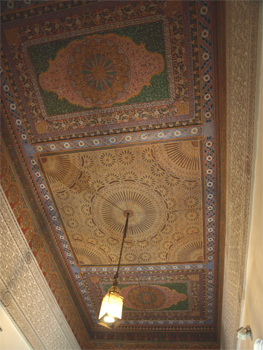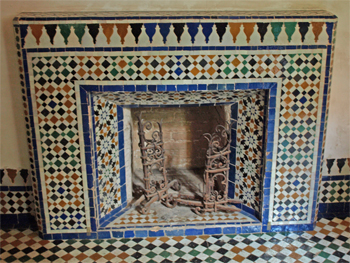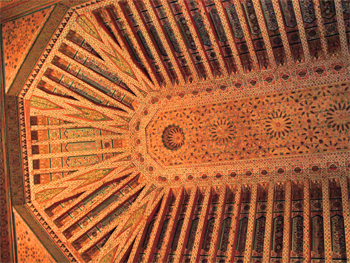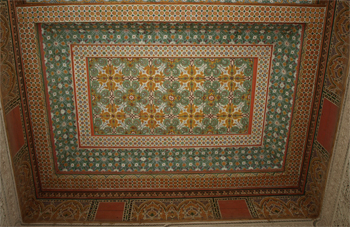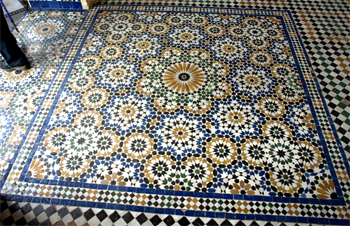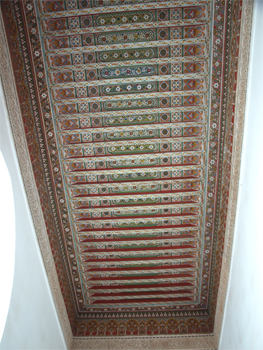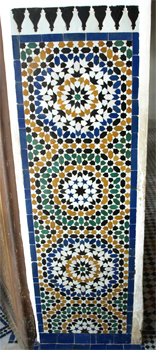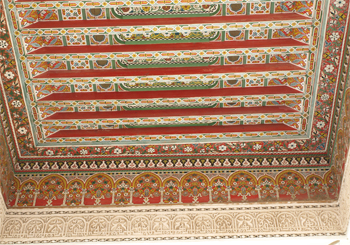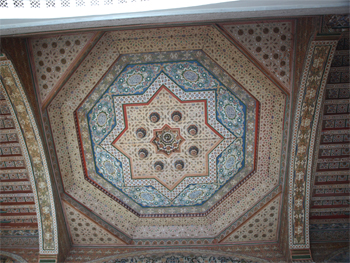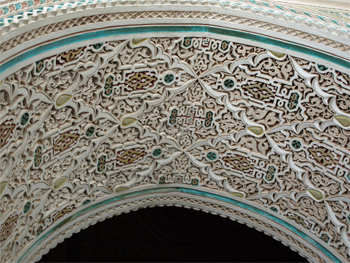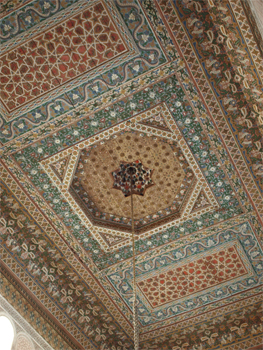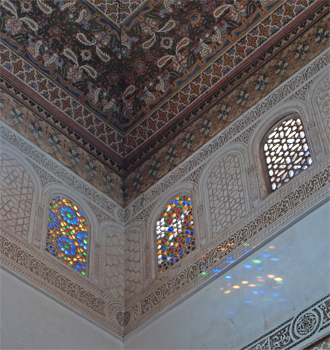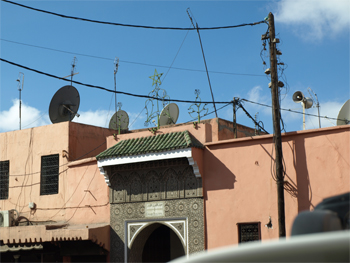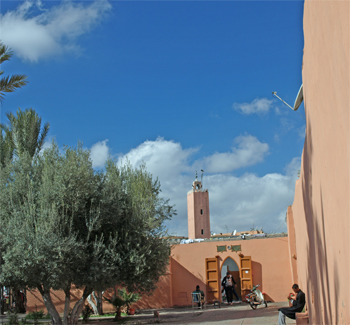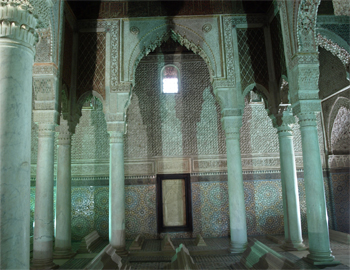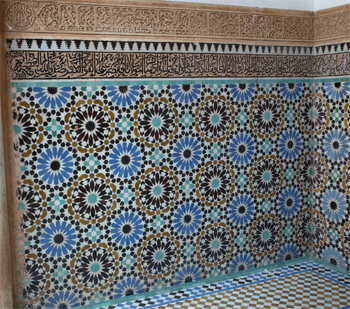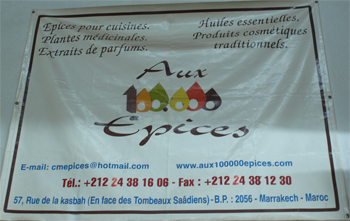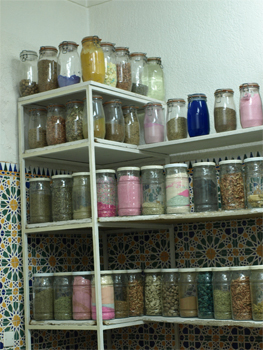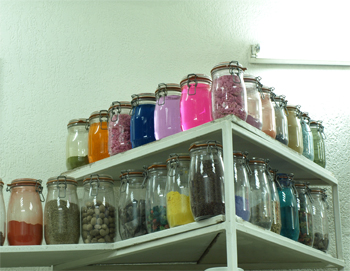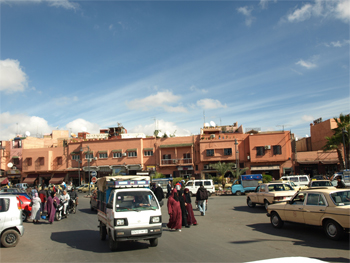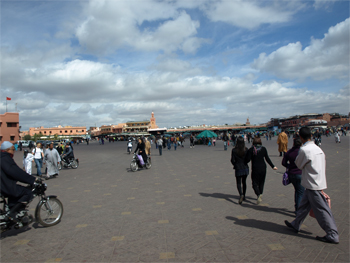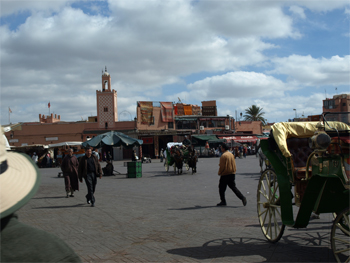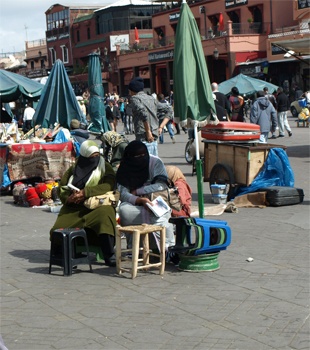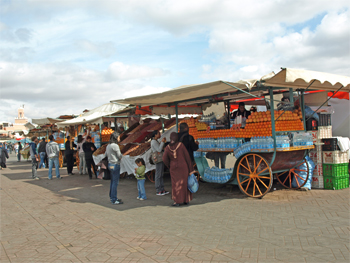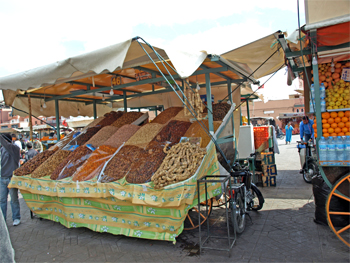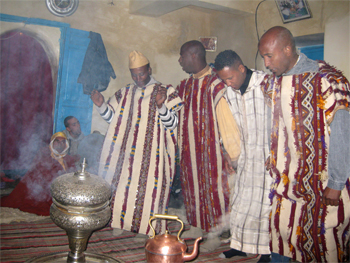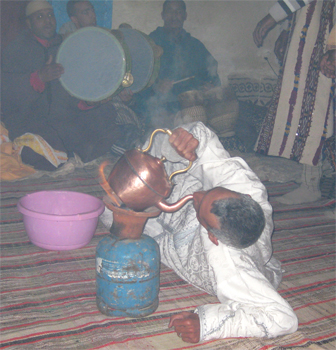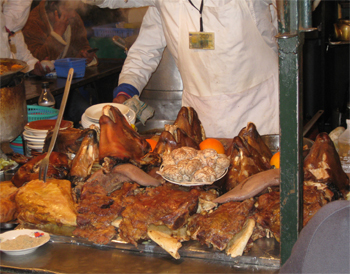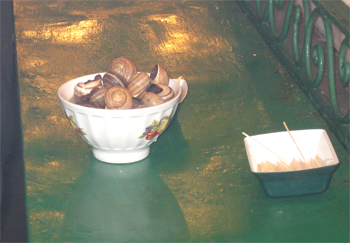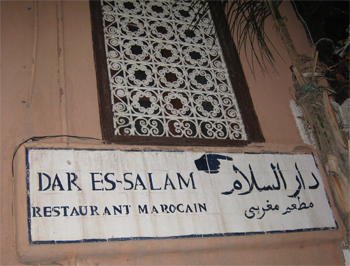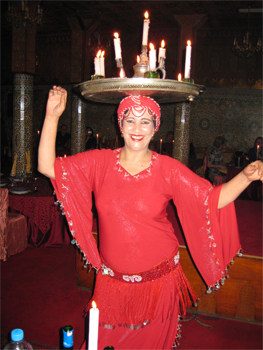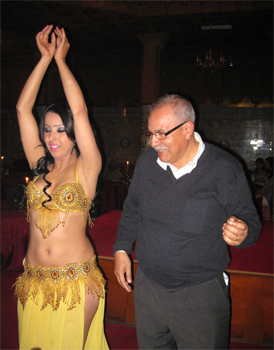We started the morning taking a horse drawn carriage ride around town instead of using our bus. We strolled through the La Koutoubia rose and Seville orange gardens to the 12th c. Koutoubia minaret and mosque. The minaret is 767 meters high and is the symbol of the city. All four limestone sides of the square tower have different designs. There are no stairs inside so whoever made the call to prayer rode a mule up a circular ramp. The tower, mosque, and ruins are a World Heritage site being restored by UNESCO.
Our horse carriage
|
Koutoubia Minaret |
Koutoubia Minaret
|
Koutoubia Minaret - pillars of the old mosque |
Storks - everywhere
|
Thirsty carriage horse |
We reboarded our carriages and rode to the Bahia Palace. Bahia means beautiful. A late 19th c. pasha or prime minister had it built in the Moorish style with mosaic tiles on the floors, carved stucco and plaster upper walls, and intricate carved plaster and cedar wood painted with vegetable dyes on the magnificent ceilings. The inner walls were left plain and were originally hung with Moroccan and Berber rugs. The palace artistic work is amazing. There are vocational schools in Morocco that are training young people to preserve these art forms - carved stucco, wood panels, etc.
Our last carriage drive took us to Jemaa Square where, at night, the snake charmers, henna artists, and fortunetellers set up shop. We walked into the medina shops to take a look and the city's souks. There are about 6,000 shops in this medina. Many of them appear to have the same items for sale. If we dared to stop and look at anything we were hassled by the proprietor to come in and have a look - "cheap, very cheap price." They often followed us down the street and sometimes grabbed an arm to get our attention.
Jemaa Square
|
Jemaa Square |
Jemaa Square |
Jemaa Square
|
Jemaa Square
|
Jemaa Square |
Medina
|
Nap time |
We ate lunch in an Italian/Moroccan restaurant just off the square for lunch. We walked back to our hotel for a short rest.
Tonight we took an optional tour "Mysterious Morocco." It could have been call "an evening of contrast!" Our bus took us to an old (poor) section of the medina. We entered a home and sat on low couches around the living room to listen and watch Sufi musicians and chanters and dancers put themselves into a "holy" trance. The people are Moslems but very moderate. They use the chanting and movement to acknowledge "the one god." One man put himself in a trance and then drank boiling water. A second man worked himself into a trance and fell to the ground. While this was going on for our entertainment, we drank mint tea and had our fortunes told, one at a time.
Sufi Ceremony |
Drinking boiling water
|
After the Sufi ceremony we went back to see Jemaa Square a night. The story tellers, snake charmers, etc. were out in force and the Square was packed with people enjoying the variety. Also in the square were dozens of tents preparing a wide assortment of food and providing tables for diners. The food - seafood, kabobs, barbeque, tagines - looked good and tourists as well as natives were partaking. Mohamed had us try sheep tongue (sweeter and softer than beef tongue) and snails. On Friday the four of us who did the Marrakech post-tour went back and enjoyed dinner at one of these stalls.
|
|
Food stalls in the Square
|
Food stalls in the Square |
Food stalls in the Square
|
Snails |
Our special dinner tonight was in an elaborate, restored 17th c. palace of a pasha that has been renovated into a fancy restaurant. Scenes from the Alfred Hitchcock movie, “The Man Who Knew Too Much,“ were filmed in one of the rooms in 1956. Our meal was delicious Moroccan food. We started with bread, wine, and six mezzes - eggplant, squash mashed with butter and cinnamon, tomatoes cooked with cinnamon and sugar, lentils, fava beans, and sweet cabbage slaw. The second course was couscous with vegetables and a lamb, tomato, and caramelized onion tagine. When we thought we couldn't eat another bite, they served us mint tea and almond cookies. For entertainment we had a woman who danced and did acrobatics on the little stage with a tray of candles on her head. She had great balance, to say the least. The second woman was a belly dancer who got several of the men to oscillate with her. The drum, guitar/lute, and violin musicians were not unpleasant. It was a festive evening.
|
Restaurant entry
|
Dancer |
Belly dancer and Mohamed
|

